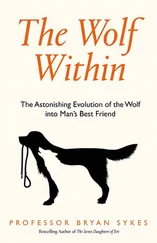After that, Shaun spent the remainder of his two years living peacefully with the pack.
Others like Shaun have found themselves strangely attracted to wolves and sought out their wild company. Sometimes they have written about their experiences and their books have become bestsellers. Farley Mowat was one such author.2 Mowat was a government biologist dispatched in the 1960s to the Keewatin Barren Lands of northern Manitoba for eighteen months to report on the falling numbers of caribou and confirm, as was widely thought, that wolves were to blame for this decline.
The shortage of caribou was worrying the powerful hunting lobby that pressured ministers to do something about ‘the Wolf Problem’. The ‘problem’ boiled down to an insistence by hunters, guides and lodge owners that wolves were destroying the big game on which their businesses depended. According to the hunting lobby, it was well known that wolves had an insatiable appetite for killing way beyond the need to feed themselves, although the blatant irony of this conviction was lost on the hunters. Mowat’s mission was to investigate the accusations and report to embattled ministers.
Like Shaun Ellis, it was a long time before Mowat encountered his first wolf. Attracted by what he thought were the pathetic cries of a young dog in distress, he set out to find the source of the whining. In order not to scare what he thought was a wolf cub, he tracked the whelps from behind a gravel ridge. Peering over the crest, he found himself only two metres away from a fully-grown Arctic wolf. For a few seconds each stared into the other’s eyes and Mowat fell under the same hypnotic spell that had entranced Shaun Ellis. The wolf was the first to break free from the spell’s grip. He leaped into the air and, with an effortless trot, vanished into the crepuscular gloom of the Arctic dusk.
In the succeeding weeks, as Mowat got to know the wolves better, he realised that, far from being the active observer, it was he, the human, who was being studied by the wolves. More than once after vainly scanning the horizon in front of him for signs of his ‘quarry’ he would turn around to see two or three wolves resting on the ground a few metres away, just looking at him. Like Shaun Ellis, he was aware of being weighed up by the wolves, but for what purpose he could not be sure.
As spring turned to summer, the tundra was streaked with long lines of caribou sauntering north to their summer territory, and Mowat had a stroke of good luck. From the top of an esker, a gravel ridge deposited by melting ice, he located a den with four young cubs playing outside with no sign of the parents. A curious cub, catching his scent, began to approach when suddenly, and with a piercing howl of alarm and warning, an adult returned. Mowat lost his footing and tumbled down the side of the ridge, ending up in a tangled heap at the bottom. Half expecting the big male, the ‘enforcer’, to clamp his enormous jaws around his throat at any moment, Mowat turned over to look up the slope. He saw not one but three adults standing in line abreast, peering down at him with amused delight. When they had seen enough of this hilarious performance they turned and silently withdrew out of sight.
Later that night, safely back in camp, it dawned on him that all the stories he had been told of wolves as savage and demented killers were completely untrue. Earlier, these animals had the hapless Mowat completely at their mercy and yet they did nothing to threaten him, even though he was close to their own cubs. After this, his view of the mission on which he had been sent changed completely. He lost all fear of the wolves, moved out of the fetid cabin he was occupying and, leaving his guns behind, pitched his tent close to the den.
Over the following months he saw that, while wolves certainly did kill caribou, they only did so at certain times of the year. The rest of the time, for example when the caribou had moved to their own summer feeding grounds in the far north, Mowat was surprised to find that the wolves lived almost entirely on mice, lemmings and ground squirrels supplemented by the occasional pike or lamprey ambushed as they made their way up the narrow channels of the muskeg to spawn.
Many things impressed Mowat about the wolves he lived with that summer. He admired their close and amiable family life, their ingenuity at finding food, and their tolerance of his presence. What impressed him most of all was their ability to communicate with other packs over long distances. One day towards the end of the summer as the first frosts iced the muskeg moss, Ootek, Mowat’s occasional Inuit companion, drew his attention to a barely audible sound on the wind.
‘The caribou are coming,’ he whispered. He had heard the faint cries of a wolf from an adjoining territory announcing the returning migration of the caribou from the north. Ootek gathered up his hunting gear and set off to intercept the herd, returning a few days later loaded down with fresh meat. Ootek related another story from his childhood on the tundra. Following Inuit tradition, when he was five years old his father, a powerful shaman, took the boy to a nearby wolf den and left him there. For twenty-four hours the young Ootek was fed by the wolves and played with the cubs, supervised all the while by one of the adults. Was this a modern example of the same sentiment behind the origin of the twin tracks of adult wolf and human child laid down on the floor of Chauvet cave some 30,000 years earlier?
I could have chosen any number of reports of humans and wolves living in close harmony in the wild. While none of these extends to witnessing the mutual cooperation on a hunt as I have imagined from the European Palaeolithic, the familiarity that the Inuit have with the wolves with whom they share the Barren Lands of Manitoba is a far better guide to understanding how we first grew close to the wolf than any amount of malicious falsehoods about their homicidal savagery.
Eventually Mowat’s sojourn with the wolves came to an end and he returned home. He had found no evidence that the wolves were solely responsible for the fall in caribou numbers. It never made any sense to imagine that they were. After all, wolves had hunted caribou for tens of thousands of years before humans arrived in North America. Far from providing the excuse that his employers and the powerful hunting lobby were searching for to justify the final extermination of the wolf from the whole of North America, his report rather proved the complete opposite. It was filed under ‘For Active Consideration’ and never seen again.
Конец ознакомительного фрагмента.
Текст предоставлен ООО «ЛитРес».
Прочитайте эту книгу целиком, купив полную легальную версию на ЛитРес.
Безопасно оплатить книгу можно банковской картой Visa, MasterCard, Maestro, со счета мобильного телефона, с платежного терминала, в салоне МТС или Связной, через PayPal, WebMoney, Яндекс.Деньги, QIWI Кошелек, бонусными картами или другим удобным Вам способом.












